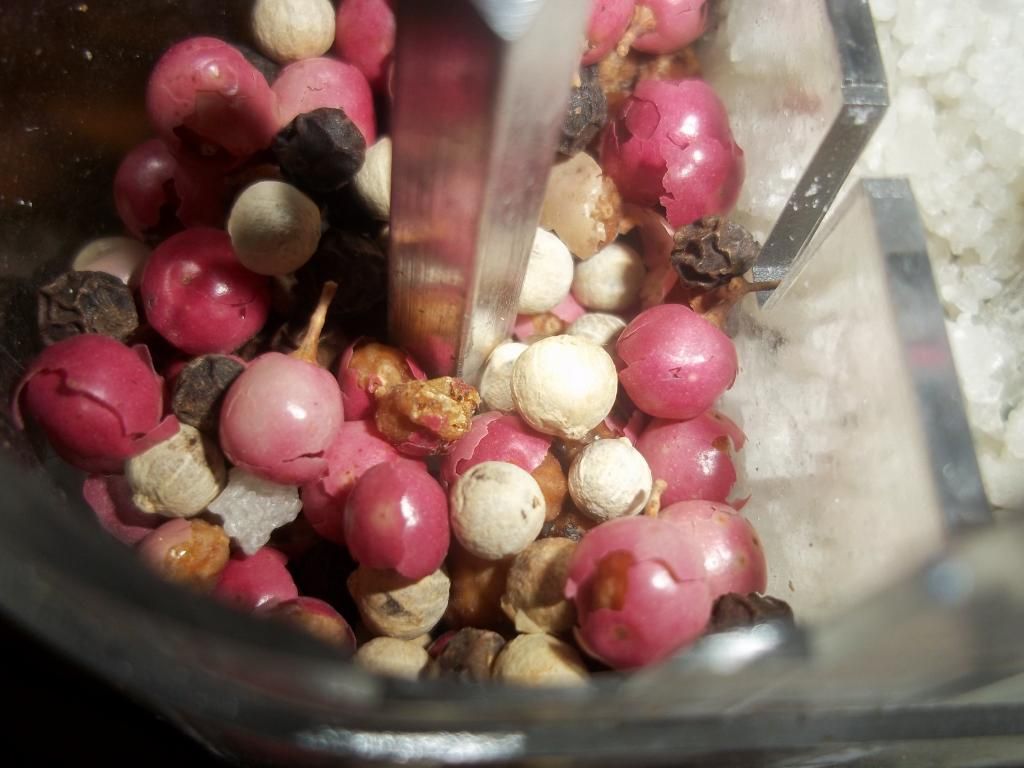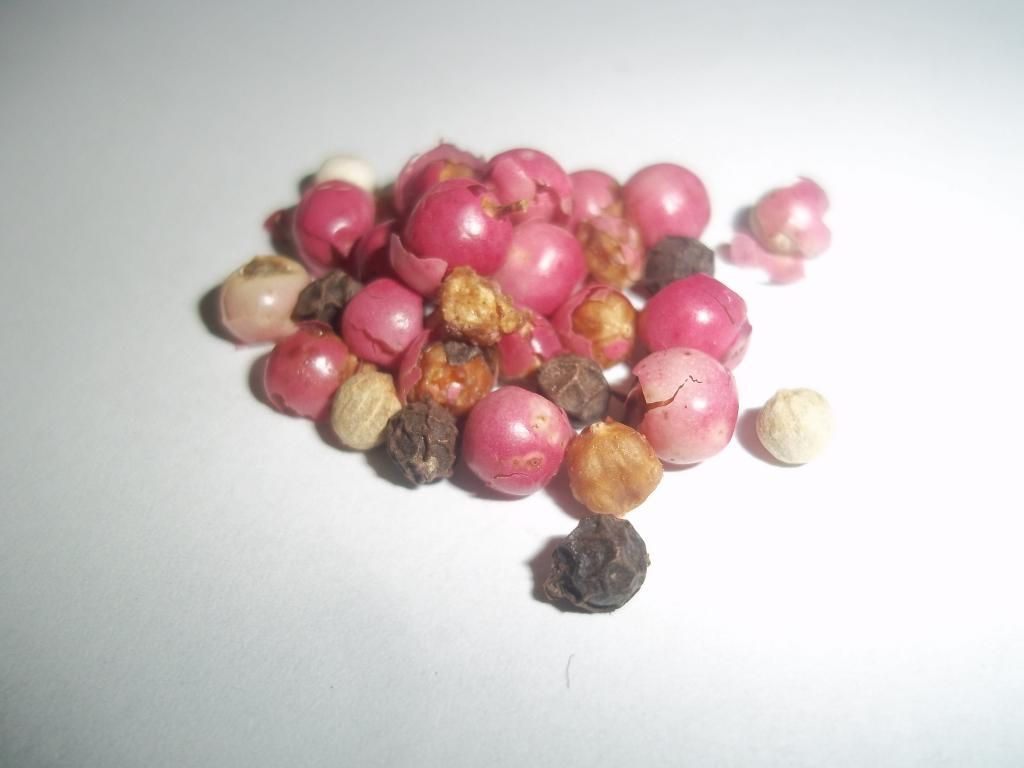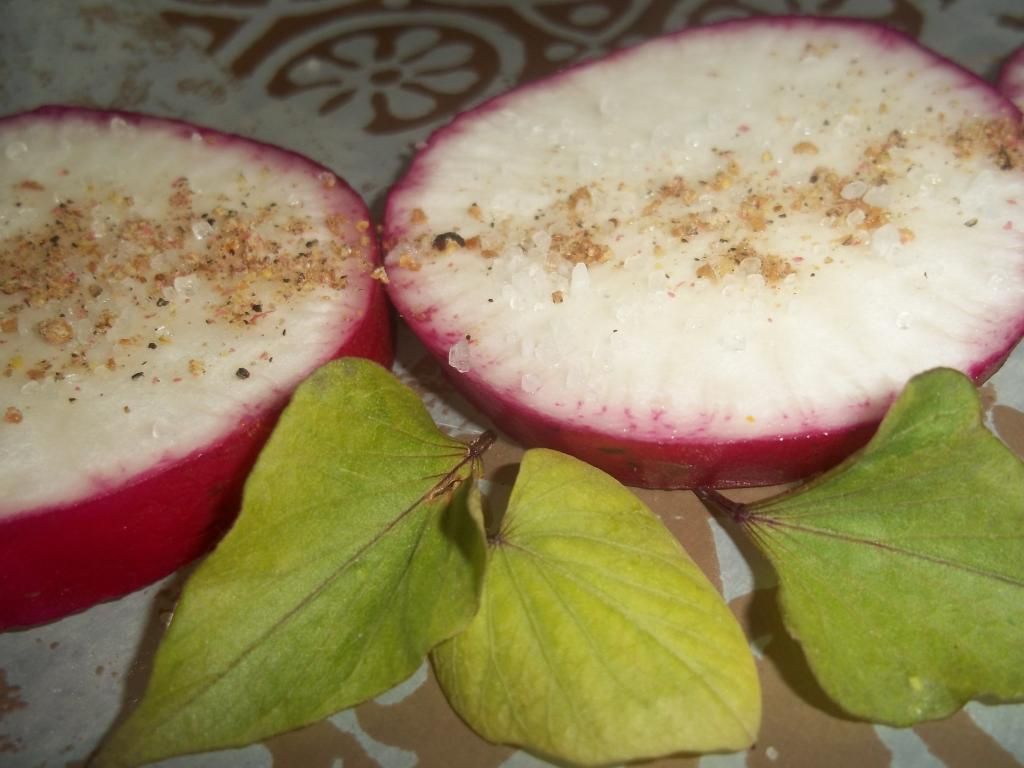 Some people, like my husband, think everything tastes better with ketchup.
Some people, like my husband, think everything tastes better with ketchup.
Other people, like myself, think everything tastes better with salt.
My uncle Jay, on the other hand, thinks that there isn’t a single thing in the world that doesn’t taste good with pepper on it. In fact, his motto is “Nothing can ever have too much pepper.” Before tasting anything, he’ll put some freshly ground black pepper onto it.
See, I’m not that extreme. I don’t put pepper on everything in the world. Just most things. And I do taste my food before adding pepper.
Usually.
And pepper, like all spices, I’ve discovered, can end up being rather expensive. (I recently noticed just how much money I spend on spices… Not fun!)
I was very happy to discover that pink peppercorns grow near me- I now use them to replace nearly half my pepper in my cooking, cutting my cost of pepper in half.
“Wait- what are pink peppercorns?” you probably want to know.
Well, I’ll tell you one thing- they’re not just another variety of peppercorn.
In fact, they’re not even related to black pepper. Or white pepper. Or green pepper. (All of whom are actually the same exact plant.) Or red pepper.
This is getting confusing.
How many types of pepper are they anyhow?
Ok, so lets start with the vegetable, the pepper, and their specific variety- the hot pepper. They’re in the genus Capsicum, in the Solanaceae family, known as the nightshade family. They’re native to America, and closely related to tomatoes, potatoes, eggplant, and tobacco. The nightshade family is one of the more common allergens. These grow on low annual plants.
But people who avoid nightshades can still have black pepper, as black pepper is just about as unrelated to cayenne pepper and bell pepper as a turtle is unrelated to a human. The only thing black pepper has in common with bell peppers, other than the name, is that they’re both plants. And flowering plants. That’s about it.
Black pepper, called Piper Nigrum in Latin, is a flowering vine, native to South India. These peppercorns grow in a cluster, and are green when unripe, red/orange when ripe. They’ve got a think red coating over a white seed, and when dried, they turn black, becoming the peppercorns we’re familiar with.
White peppercorns are black peppercorns with their red coating removed, either before or after drying. Green peppercorns are unripe peppercorns.
In my local spice shop, there is a specialty spice blend called “The Four Seasons Pepper Blend” containing white, black, green, and pink peppercorns.
But pink peppercorns are not related to the other three peppers in the Four Seasons Pepper blend. Because while those are Piper Nigrum, pink peppercorn is Schinus molle in Latin, and again, completely unrelated both to black pepper and to bell pepper/chili pepper. Completely as in completely, completely, all the way up the family tree, not even with a common ancestor.
You know what they are related to?
Sumac. Yea, that other spice that grows near me and probably grows near you as well. They’re both in the Anacardiaceae family- they’re close cousins. Not first cousins, but second cousins.
But let me backtrack for a second.
That four seasons pepper blend in the grocery store? I’d looked at it, but never really bought it. I saw no need for paying extra for some specialty pepper. Though I must admit, I was intrigued when I saw it- I’d known about white peppercorns and black peppercorns, but it was the first time I had seen green or pink peppercorns.
Then one day, I was walking down the street, back from a foraging walk that I had taught, when I saw something that looked like a peppercorn, hanging from a tree.
But it was pink.
But it looked like a peppercorn!
Eh…
I pushed it out of my head.
But every day when I’d come back from my foraging walks, I’d pass that strange looking pink peppercorn type thing.
Was that pink peppercorns? Like in that pepper blend?
Maybe. Who knows?
No way to tell, right?
Well, I wanted to do an experiment. Pepper has a spicy smell. Surely pink peppercorns would smell spicy too, right?
I picked a pink berry from the tree, and tried crushing it. But some thin, pink stuff flaked off, and I was left with a white crumbled seed. Which was soft enough to crush. So I did.
Guess what?
It smelled peppery!
First clue- it looks peppery.
Second clue- it smells peppery.
Guess it was time to do further research on this plant and discover if yes, it truly was pink peppercorns.
I picked a cluster or two, and took them home.
Where I discovered that- guess what- it IS pink peppercorns! My first hunch was correct! Awesome!
These berries grow in clusters on stems, much like grapes do.
The Peruvian peppercorn tree is an evergreen tree, so no matter when you find it, you’ll see these distinctive leaves.
The tree grows up to 50 feet tall, but you’ll often find them shorter. The shorter they are, the better, because then you don’t have to reach above your head, swinging your arms like a maniac, trying to grab hold of those elusive clusters of pink peppercorns, in front of a large audience. Not that I would know anything about that anyhow…
The trunk of the pink peppercorn tree is bumpy and dark brown, and possibly gnarled.
As far as I know, there are no poisonous lookalikes to this pink peppercorn tree. The closest you have to that is the schinus terebinthifolius, which looks different in the sense that its leaflets are much wider than on the schinus molle- they’re nearly round.
I harvested my pink peppercorns in the summer, but I noticed they were there on the branches for a long time before I actually picked them, so I don’t know when exactly is the ideal time to pick them. What I do know is that I just discovered a pink peppercorn tree in my community, and there aren’t peppercorns on the tree at the moment, only flowers. (This is what the flowers looked like.) I was able to tell that it was schinus molle also by the drooping leaves, and by the fact that even the flowers smelled peppery.
I make my own 3 seasons pepper blend now, with 1 part black pepper, 1 part white pepper, and 2-3 parts pink peppercorns, and use this in place of black pepper in nearly all recipes now. I don’t use green peppercorns in mine because that’s a specialty item that I can’t get easily or cheaply; my point is to make a mix to save money; I don’t need to mimic the 4 seasonings blend exactly.
I think it’s easy to say that pink peppercorns are my favorite foraged food. Or at least the one I use most often.
I’m so happy I figured out that those berries I was passing all the time not only were edible, but could help save me money, by replacing an item I was spending money on already.
Did you know that pink peppercorns, black pepper, and cayenne pepper weren’t at all related to each other?
Ever eat or cook anything with pink peppercorns? Ever see the “Four seasons pepper blend” in the grocery store? Have you used it?
Do you recognize this tree? Have you seen it growing near you?
From this description, would you feel confident enough to forage it on your own?
Any wild edibles you saw on a regular basis, and figured out it was edible in the same way I figured out that these pink peppercorns were edible?













0 Responses
So when should I pick them? Mine are green, pink, and purple at the moment but a lot of the green ones are turning yellow and falling to the ground. Also, it is very strange that the squirrels and birds don't mess with them at all.
Anyone know how to prepare them? Do I have to remove pink shell? If so, some of mine have a white residual – mold?
I live in Corona CA by the Santa Anna River, I see a few pink pepper tree's along the bank, I will try to pick some of the fruit and see what they taste like.
Remove stems rub corns by hand to remove hules.
Remove stems rub corns by hand to remove hules.
I live in Hemet, and harvested a couple small bags of these. Dried them for at least a month, and bought a new grinder to put it in. Immediately, the grinder gummed up and little would come out. What DID come out was sticky, gummed together. I was going to try drying/roasting them on a cookie sheet in oven at about 200 degrees. Thoughts?
I live in Hemet, and harvested a couple small bags of these. Dried them for at least a month, and bought a new grinder to put it in. Immediately, the grinder gummed up and little would come out. What DID come out was sticky, gummed together. I was going to try drying/roasting them on a cookie sheet in oven at about 200 degrees. Thoughts?
I have been cooking with pink peppercorns in sauces for years. OK, there are some people who are allergic to them but tell me a food that someone isn't allergic to nowadays. Our favorite is frying off chicken breasts or thighs in half butter and olive oil, adding a bulb of garlic (skinned) half way through. Adding single cream to just cover. Salt, black pepper to taste and then dessert spoonful of pink peppercorns (not crushed) and simmer till the chicken is cooked through. Very yummy. and none of my guests have died to date! Good too with steak and trout
I have been cooking with pink peppercorns in sauces for years. OK, there are some people who are allergic to them but tell me a food that someone isn't allergic to nowadays. Our favorite is frying off chicken breasts or thighs in half butter and olive oil, adding a bulb of garlic (skinned) half way through. Adding single cream to just cover. Salt, black pepper to taste and then dessert spoonful of pink peppercorns (not crushed) and simmer till the chicken is cooked through. Very yummy. and none of my guests have died to date! Good too with steak and trout
Always wondered if these were useful as a pepper alternative. Thanks heaps !
Always wondered if these were useful as a pepper alternative. Thanks heaps !
try them and see if you die?
I’ve read that they’re too soft/not dry enough for a pepper grinder, so most people use a mortar and pestle instead. I don’t like to crush them up at all — just take a few while pink peppercorns and sprinkle them on top of a caprese salad or fish, and they’re add a great little peppery & fruity kick.
Gonna give your recipe a crack!
Gonna give your recipe a crack!
Weve been eating ours for over 12 years
Weve been eating ours for over 12 years
This comment has been removed by a blog administrator.
This comment has been removed by a blog administrator.